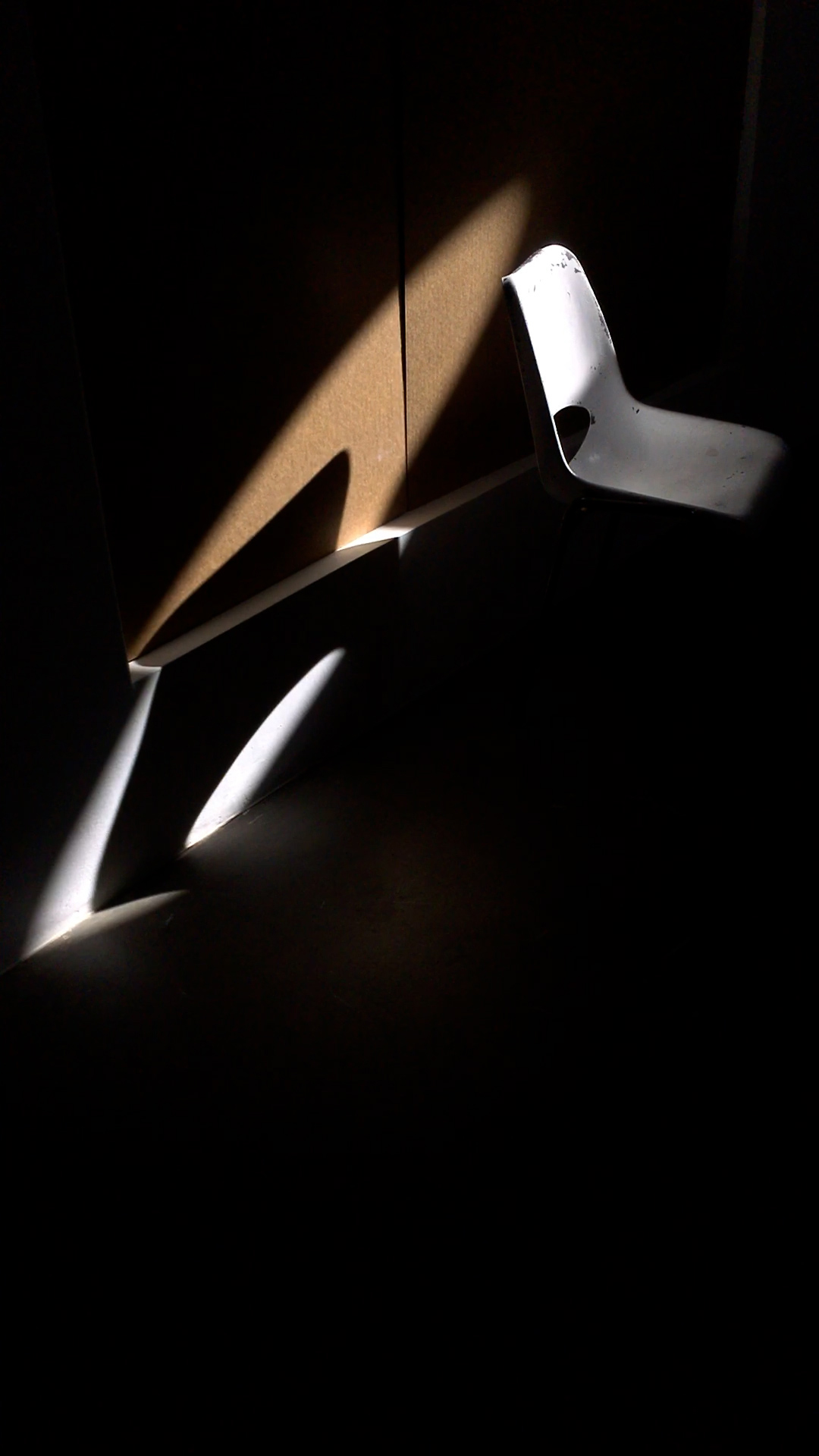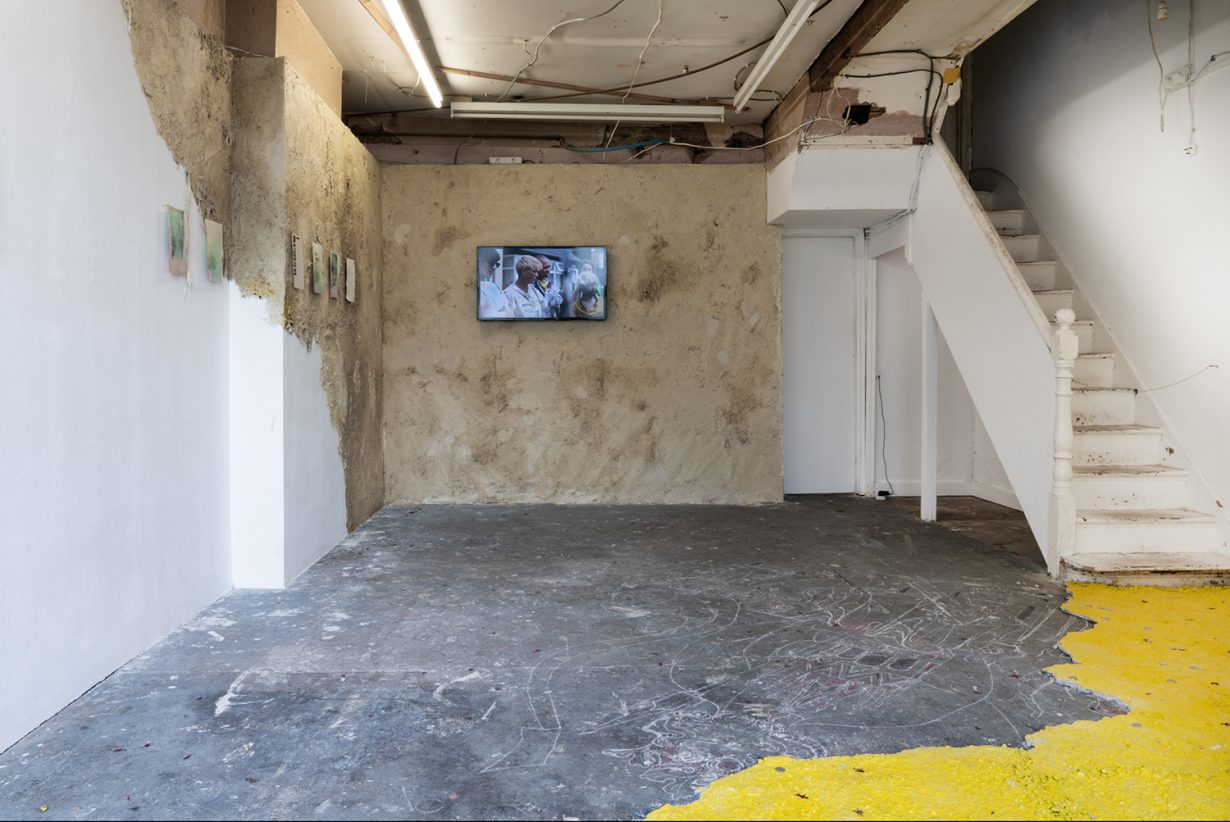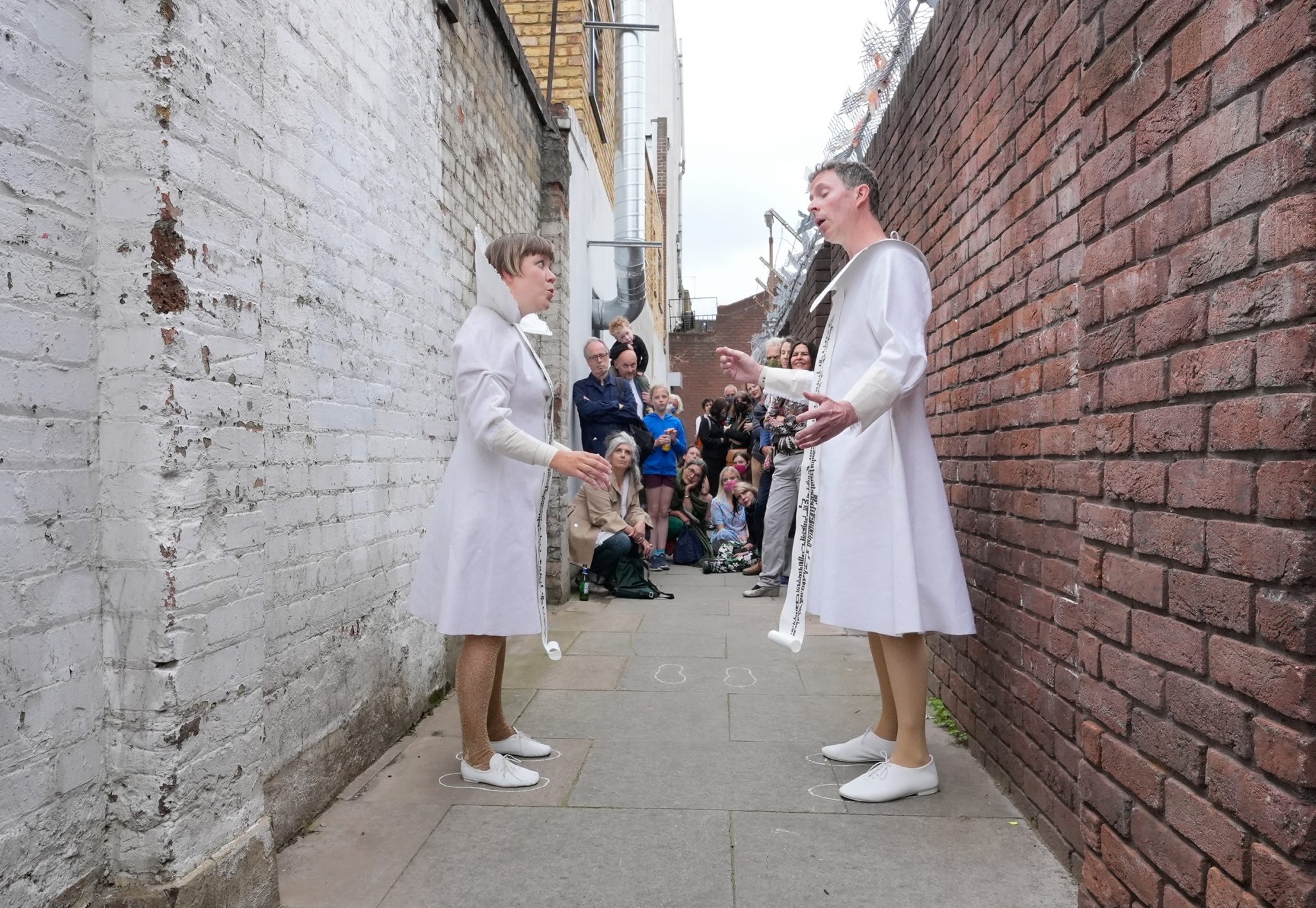With the city’s commercial artworld looking increasingly homogenised, its independent spaces increasingly commercialised, can the capital preserve its diversity?
A few months ago, I found myself locked alone in a small room, watching the spotlight of sun shining through a circular window work its way across the large pieces of cardboard, coloured in at various points with chequered black squares, that covered all the room’s other windows. Cryptic markings in yellow tape dotted the floor, alongside a faded white plastic chair that I was warned not to sit in. More recently, I stood amidst a small crowd in a narrow alleyway while a man and woman in white robes, looking something like baroque sci-fi priests, hooted at each other. Communicating in a singsong back and forth, with phrases that sounded like abstracted, elongated ‘hi’s and ‘wow’s, they nodded and bowed like courting birds in a performance that was as harmoniously mesmerising as it was awkwardly comedic.
Both experiences were instigated by London project spaces – the first, Lucy Gunning’s exhibition In Passing at Palfrey; the second, a performance of Sing Sign (2015) by Hanna Tuulikki at Kelder. Both were remarkable, in part because they had a simplicity and directness that felt appropriate for a moment in which we are just beginning to reengage with the wider world; but also simply in that they were there in the first place. London’s alternative exhibition spaces, or whatever you want to call them – the artist-led, curatorial, informal and experimental spaces that have, at points, helped define the city’s art ecology – are disappearing.

To be more accurate, such spaces are dissolving. Even prepandemic, some readers might have noticed that London’s steady tick of new galleries and exhibiting spaces had continued, but where previous years might have seen a decent percentage of those at least start as project spaces, the majority of newer spaces have opened as expressly commercial ventures. The pandemic has seen blocks of abandoned city offices and shops left empty: perhaps, in the more immediate future, this will see a return of short-term exhibitions, a nod to the squatted days of yore, but this time in the hollowed-out caverns of a carpeted insurance office or an abandoned hotdesk café. I get the feeling, though, that current practitioners, and landlords, are more savvy to the uses of the presence of ‘creatives’ in the city. London’s ‘underground’ is getting more diffuse, and more private. It’s moving away from the postindustrial, squatting legacy-model of taking up physical space with group shows in massive crumbling warehouses or old shopfront locations, like Tracey Emin and Sarah Lucas’s The Shop (1992), or the done-up betting shop of City Racing (1988–98), or Associates (2006–07). Such spaces gave artists like Keith Coventry, Susan Hiller, Mike Nelson and Gunning herself a chance to experiment, mess around and develop their work in unusual locations. By necessity, what the city is moving towards is smaller, itinerant and more events-based ways of working, a hybrid collective and popup model that might equally organise gigs, print a zine or hold a one-night show in a community café.
This isn’t a eulogy, or an old-timey whinge about how things ‘ain’t as good as they used to be’; things are changing, as they always have. Commercial galleries gonna commercial gallery, and the various subscenes, with their various shades of intention and access, will do their thing (see, for example, the plant-and-amateur-gardening art scene, the part-time-job-limbo scene, the academic-conference scene, the sitting-room-corner gallery scene, etc). But it does feel as if there is a shift that needs to be marked, and that we should acknowledge what’s at stake in any city’s art landscape. The point, as I loosely understand it, of project spaces is to challenge what gets shown, to widen the homogeneity and repetition that commercial galleries tend to lean towards, to rattle the assumptions that there is just one way to ‘artworld’. To give a more truthful spectrum to the forms of art that are made, and to what is validated with an IRL exhibition and the potential of chance glances and encounters. And – something that I feel acutely after the past year – to allow more space for more art and artists to fail: to see what doesn’t hold up to sustained looking, to exist beyond the manicured and poised frame of an image online, to fail constructively and build on that.

Speaking to several people helping to run some of the city’s project spaces, I hear that the issues at the forefront of their minds are funding structures and, overall, sustainability. It’s worth noting that many of the city’s more august project spaces, including Cell Project Space (founded in 1999), Chisenhale Gallery (1986), Cubitt (1991), Gasworks (1994), Kingsgate Project Space (1978), Studio Voltaire (1994) and Matt’s Gallery (1979), started as studio-based and studio-provider exhibition spaces, some of them eventually formalising with public funding and patronage systems. With reliable square metreage being the city’s prime commodity, the studio-gallery is the current dominant mode, with rooms to show work at studios including Black Tower Projects (2017), Collective Ending (2019), SET (2016), Turf (2013) and Zona Mista (2017), among others. It makes sense: if you’ve carved out space to make work, you can use a part of that infrastructure to display it. Though compared to those spaces founded in the previous century, however improvised their original aims, the question of which of these current spaces will still exist in three decades’ time seems much more precarious.
Discussing recent shifts, Edward Gillman, current director of Auto Italia in Bethnal Green, noted that, “for new spaces to survive in a hostile economic environment, they need to quickly learn to engage with opaque and conservative bureaucratic systems. These processes are often opposed to the logics of artist project spaces, which are run on the basis of shared ethics and desires for community.” Project spaces pointedly aren’t businesses, and don’t have the structure of finite quarterly aims or the potential for unlimited growth. Auto Italia began as a project in a squatted car warehouse in 2007 and is now a charity with Arts Council funding (incidentally, based in the building that used to be The Showroom; founded in 1983, now based in West London). Gillman talks of the necessity of shifting focus from the mentality of completion, as the goal-oriented approach of economics, towards the more holistic approach of nurturing in the long term.

Carolina Ongaro and Katie Simpson of Jupiter Woods echo this: “We have been considering ways of working as an organisation that step away from an extractivist mentality and the patterns of competition that make up the artworld to instead embrace approaches that prioritise community growth, joy, wellbeing, and in general, contribute to an economy based on solidarity. Access to and the sharing of resources should be a priority right now.” Jupiter Woods was set up in 2014, originally given six months in a house that was going to be demolished, eventually shifting to a nonprofit organisation focusing on discursive projects with a long gestation period, such as their recently-opened show with Carl Gent, which was developed over a yearlong residency with the space.
It’s the conception of taking more permanent or long-term space that is now both elusive and exclusive. Gillman sees a necessary communal potential in having a bricks and mortar location, describing Auto Italia as having a function analogous to the area’s queer bars and social spaces: “Both have a vested interest in developing a conversation around the people that arrive at that building, creating a forum in which an evolving conversation can take place”. Despite this, what Ongaro and Simpson see as currently taking shape across London is “connected more to the drive to create and engage with art in multiple ways, rejecting the older pattern of gallery spectatorship only”, nodding to spaces like FAT Studio’s Old Kent Road Arts Club and the Avalon Cafe.
So farewell to the ghosts of City Racing, Fieldgate Gallery, Gallerie Poo Poo, Million Miles Per Hour, Res, Space in Between and innumerable other models of previous decades; the battle for much of the physical aesthetic terrain of the city has been relegated to the market. What’s rising from the hostile environment of an ever-commodifying city instead is a dispersed set of guerrilla activities, where small, semiporous peer networks appear for an instant, before swiftly moving on. The project scene is the fertile soil and necessary humus, if we want to continue the nature metaphor, for any city’s ecology: a space for unchecked and unexpected growths, where unruly ideas push through the pavement cracks. It needs tending, and attention: catch it while you can.
Chris Fite-Wassilak is a London-based critic and author
London’s Alternative Exhibition Spaces: a Directory (updated 09/24)
A.P.T.
Arebyte
Art Hub Studios
ArtWorks Project Space
ASC Gallery
Autograph
Auto Italia
Avalon Cafe
Beaconsfield
Bermondsey Project Space
Black Tower Projects
Block 336
The Bomb Factory
Calcio
The Call Centre
Cell Project Space
Chelsea Space
Chemist
Chisenhale Gallery
Classwaroom
Coleman Projects
Collective Ending
Common Age
Cubitt
DKUK
F.A.T. Studios
Filet Space
Five Years
FlatTime House
Gasworks
Gossamer Fog
Grandine_
Greatorex Street
IMT
Iniva
Jupiter Woods [currently not running exhibitions]
Kingsgate Project Space
Kupfer
Le Bourgeois
Lewisham Arthouse
LUX
Mackintosh Lane
Matt’s Gallery
Mimosa House
MOCA
Mosaic Rooms
No Show Space
The Nunnery
Outhouse Gallery
Peckham Platform
Peer
Piccalilli
Plaza Plaza
Proposition
Raum X
RuptureXIBIT
St Chad’s
San Mei
SET
The Showroom
Somerset House
Southwark Park Galleries
Space Ilford
Space Station Sixty-Five
Staffordshire St
Studio 1.1
Studio Voltaire
Tension Fine Art
Terminal Projects
Turf
TACO!
Unit 3 Projects
White Conduit Projects
Worse
